In Vilhelm Hammershøi’s lifetime (1864-1916), art changed arguably more than in all previous centuries combined, evolving from impressionism to post-impressionism, symbolism, fauvism, cubism and the early stages of abstraction.
Hammershøi attended Denmark’s best art schools, spent long stays in European capitals and exhibited at the 1889 and 1900 World’s Fairs. His library was filled with art journals. He knew a revolution was occurring in painting, but he chose to ignore it.
It appears to have been a conscious decision. Hammershøi’s mother Frederikke warned him not to let himself be “contaminated” during a visit to Paris.
By the age of 17, Hammershøi had chosen his themes: portraits of family and close friends, spare interiors and a few landscapes. He shunned the boisterous subjects and colours favoured by his contemporaries, limiting his palette to subdued grey, blue, black, white and ochre.

Hammershøi took few risks and never explained his art. His most experimental paintings were a large group portrait of five fellow artists in 1901-1902, and two female nudes painted in 1910, six years before his death from throat cancer. The nudes are stark, clinical and devoid of eroticism. He was so exhausted by them that he painted no others.
Hammershøi painted slowly, completing only 400 canvases. He expressed admiration for only one other painter, the American James McNeill Whistler, who he tried unsuccessfully to meet in London. Hammershøi even imitated Whistler’s portrait of his mother by painting Frederikke seated in profile.
Forty Hammershøi canvases can be seen at the Musée Jacquemart André until July 22nd. It is the first major exhibition of his work in Paris since the 1997 show at the Musée d’Orsay brought him to wide public attention. His prices at auction have risen dramatically since.
Danish museums were reluctant to lend many of their paintings, so Jean-Loup Champion, the co-commissioner of the current exhibition, travelled to New York to see John Loeb, the Reagan-era US ambassador to Copenhagen and collector of Danish art.
“Loeb said, ‘Take whatever you want’,” Champion recounts. “It made it possible for me to organise the exhibition that I wanted. I took 11 paintings.”
Strange, silent beauty
The Hammershøi revival, 103 years after the painter’s death, is a tribute to the strange, silent beauty of his art. In his own lifetime, Hammershøi was hopeless at self-promotion. “Be sure to see Durand-Ruel. Be sure to see Théodore Duret,” his apparently domineering mother prompted him when he travelled to Paris, referring to the great art dealer and critic. The taciturn Hammershøi allegedly turned down all dinner invitations in the French capital.
The Bohemian-Austrian poet and novelist Rainer Maria Rilke saw Hammershøi's 1890 portrait of his fiancée, Ida Ilsted (Copenhagen Statens Museum for Kunst), at an exhibition in Berlin. Rilke was so fascinated by the portrait of the painter's future wife staring blankly as she sits before a beige wall that he travelled to Copenhagen with the intention of writing a book about Hammershøi. The artist had nothing to say, and Rilke abandoned the project.
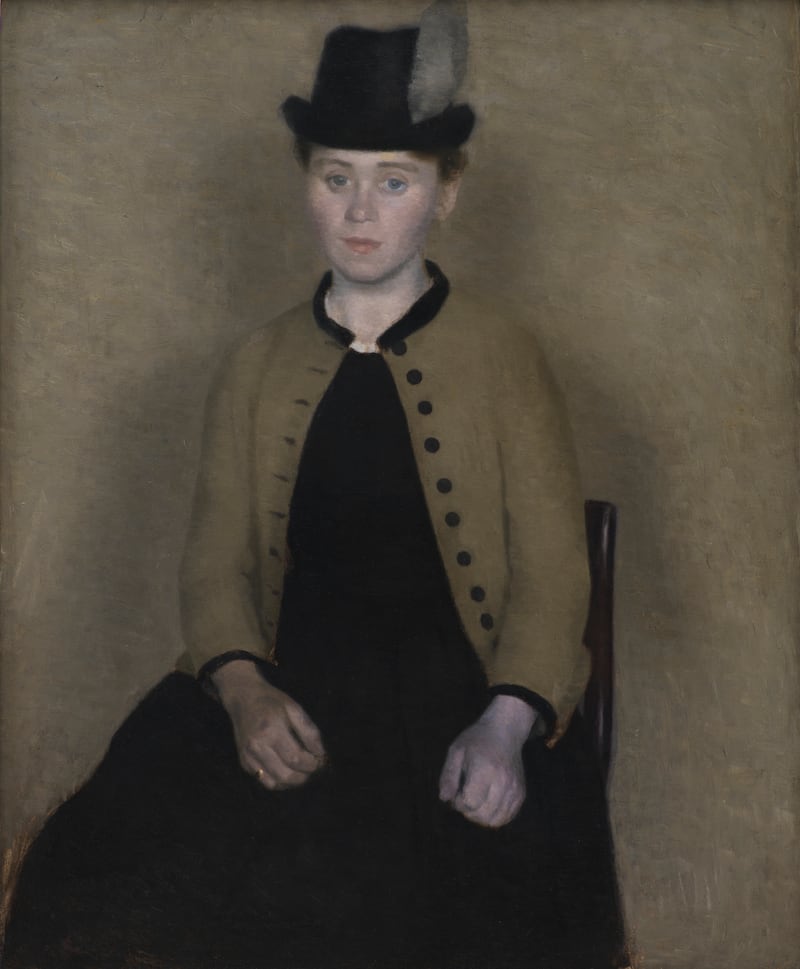
Ida was the sister of Hammershøi's close friend and fellow painter Peter Ilsted. She became her husband's most frequent model, usually painted from behind, with her hair pulled up, revealing the nape of her neck.
Ida’s exposed neck, particularly in the Musée d’Orsay’s exquisite Repose (1905), is the only hint of sensuality in his paintings. She is invariably clothed in grey or black, often with an apron.
Hammershøi placed Ida at the centre of Three Young Women (1895, Ribe Kunstmuseum Denmark), between her two sisters-in-law, Ingeborg Ilsted, Peter’s wife, and Anna Hammershøi, the painter’s sister.
Hammershøi’s subjects never interact with each other, nor with the viewer. “He does not want there to be a connection,” says Champion. The only contact between the three women is their knees touching.
Hammershøi often painted blank frames. We don’t know if the frame on the wall behind the three women contains a mirror or a picture. Nor does he show us what lies beyond his many doors and windows. These blank spaces strengthen the closed-in feeling of his paintings.

Hammershøi considered Five Portraits (1901-1902, Stockholm, Thielska Galleriet) to be his masterpiece. The curious, imposing canvas measures nearly 2m x 3m, and shows five painters, including Peter Ilsted and Hammershøi’s younger brother Svend, seated around a table.
The meeting is more funereal than festive. Again, there is no interaction between subjects. The painter Carl Holsoe rests his enormous feet on a stool in the right foreground. The table resembles a casket covered with a white cloth. It is lit by two candles that cast a cold light. There is no food. The wine glasses are empty. Gabriel Axel, the director of the Oscar award-winning film Babette's Feast (1987) said the set of his banquet scene was inspired by Hammershøi's painting.
Danish history
Hammershøi was emblematic of a period in Danish history, Champion says. Denmark lost Norway to Sweden 50 years before the artist was born, and his birth coincided with the loss of Schleswig-Holstein to Prussia. Shorn of most of its territory, the country turned inward. Long, dark winters further contributed to the Danish concept of hygge, meaning cosy indoor comfort.
Hammershøi’s close friends Ilsted and Holsoe fulfilled the definition of hygge, painting their interior scenes in warm, inviting tones. Hammershøi did not. He showed 11 paintings at the 1900 World’s Fair but sold none. Ilsted showed only two, but sold one to the French state, which had just demonstrated its lack of artistic judgment by bypassing the Impressionists.
Hammershøi has been called the Vermeer of the 20th century. The simplicity of his interiors conveys a sense of timelessness, not unlike the Dutch masters. In the only interview he ever gave, to a Danish newspaper, Hammershøi said that lines, horizontal and vertical, and light were the most important thing in his paintings.
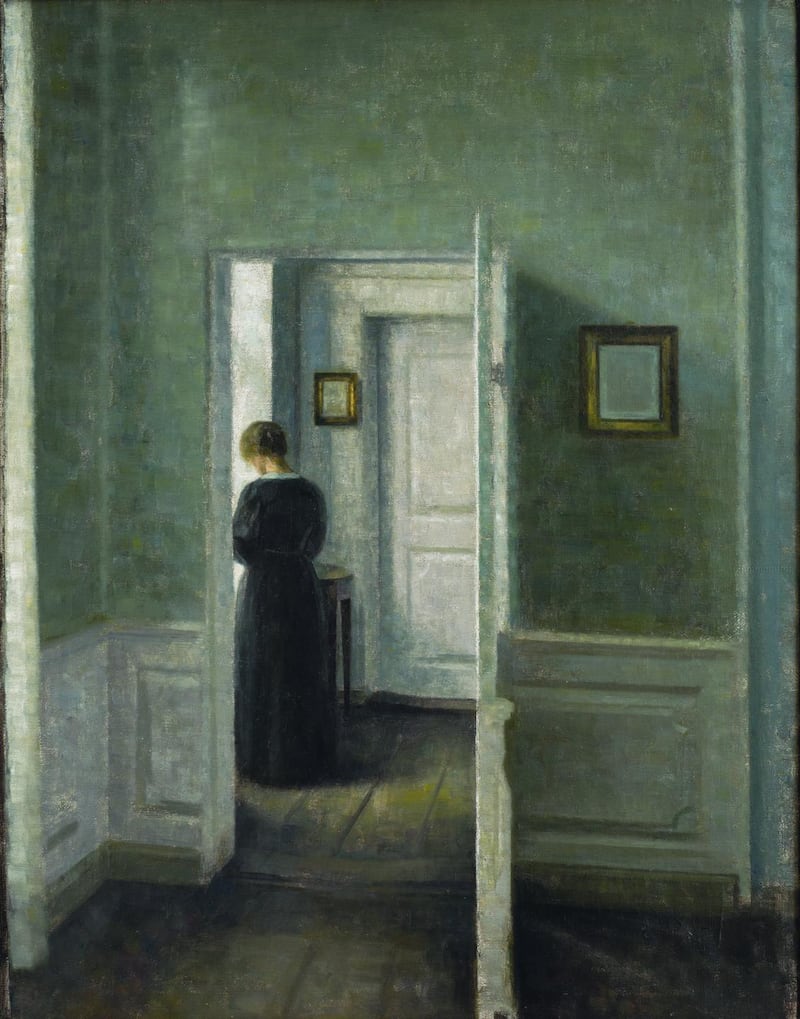
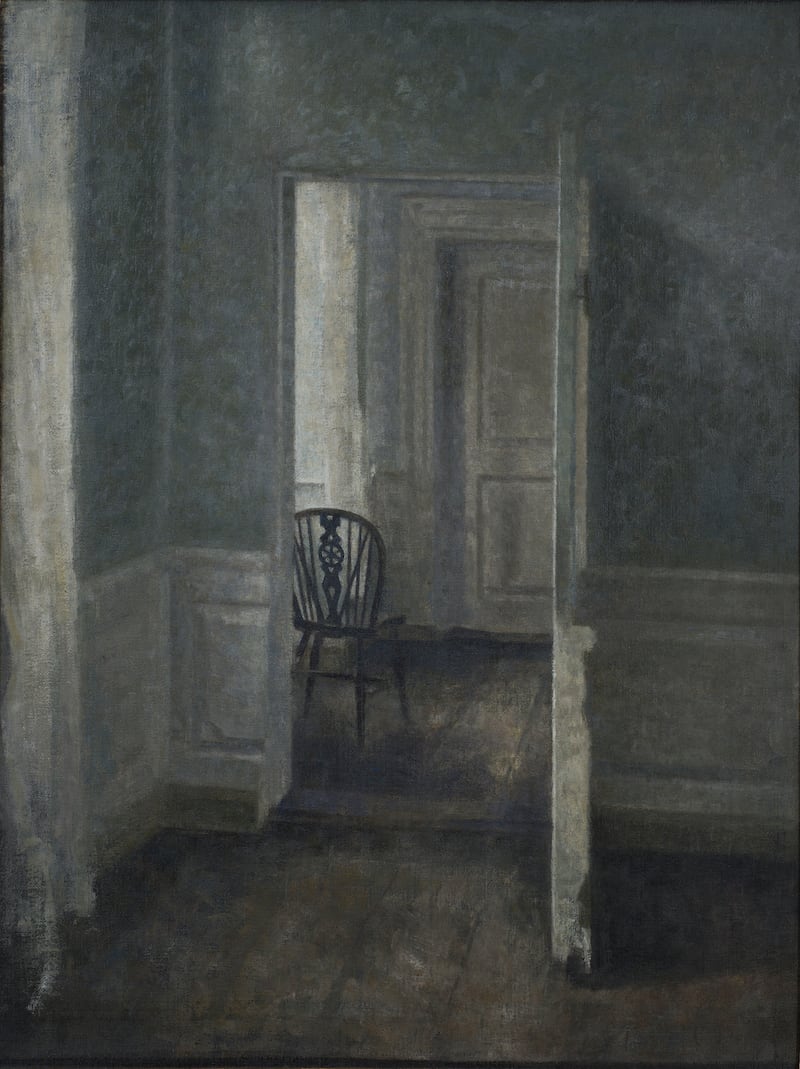
In Interior With a Standing Woman (Ambassador John L Loeb Jr Danish Art Collection), Ida stands near a window, her back turned to the painter, who seems to spy on her from the next room. Identical, empty frames hang in both rooms. Light falls on the parquet floor. One can almost see particles of dust in the air. Nothing moves. Nothing happens.
Interior With a Windsor Chair (1913, also from John Loeb’s collection) shows the same two rooms and doors, except that Ida has been replaced by a chair. Otherwise, both rooms are empty, as if a moving company had come and emptied out the apartment.
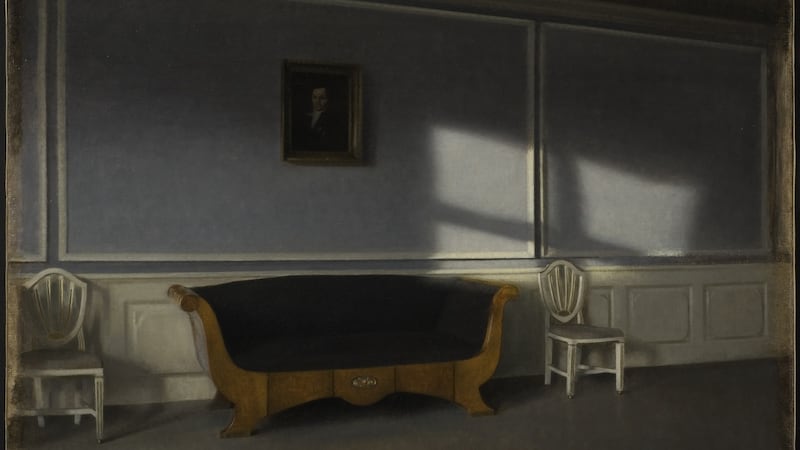
In Ray of Sun in the Salon, III (1903, Stockholm, Nationalmuseum) sunlight through an unseen window throws the pattern of a cross, created by the window sash, on the wall. Did Hammershøi, a Lutheran, mean to signify something religious? Again, he does not tell us.
In the same painting, a Biedermeier sofa flanked by two white chairs sits under a man's portrait. Despite its great simplicity, the interior speaks to us. As the late French art historian Daniel Arasse said, referring to Vermeer, "Something in the painting thinks, and it is thinking without us, without words."
Interiors
All Hammershøi’s interiors exude the same sensation. Objects seem to inhabit time-suspended space, on a par with humans. Contrary to a common critique, the paintings are not cold, melancholic and anxiety-ridden, but rather, calming and meditative.
The Danish journalist who interviewed Hammershøi said visiting his home was “just like entering one of his paintings”. Danish apartments of the period were cluttered with furniture and objets d’art. Photographs of Hammershøi’s home show it contained more than one sees in his paintings. Before commencing a painting, he removed objects. Like Beckett peeling away excess verbiage to empower language, Hammershøi knew that less can be more in painting. He simplified his landscapes too. No landmarks or humans interrupt the flow of fields. No passersby walk in the streets. Copenhagen and London are painted as if through a fine mist.
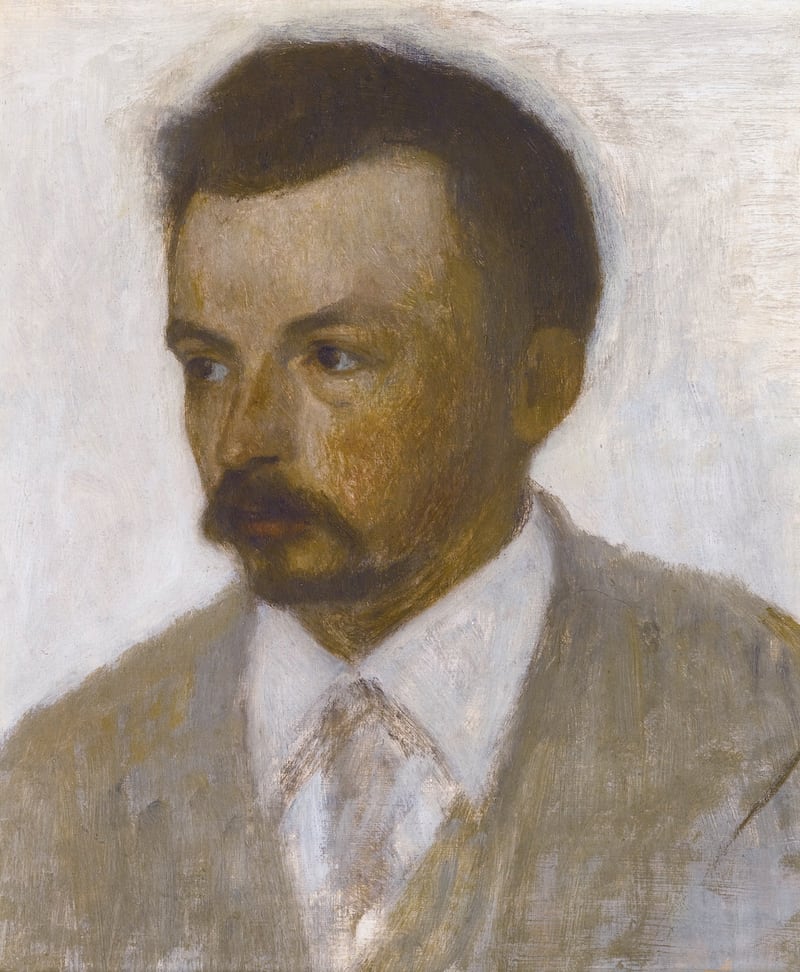
Hammershøi is compared to many painters, not because his canvases look like theirs, but for what they evoke. Silence, like Chardin and Vermeer. Geometry, like Mondrian. The muted colours of the north, like Paul Henry. The isolation of his human figures and the simplified décors they are set in remind many of the American realist Edward Hopper.
If Hammershøi’s oeuvre proves anything, it is that an artist does not have to be “of his time”, as Manet said. It is possible to create haunting images that survive many decades, without being new or innovative. Hammershøi’s stubborn vision paid off. He is today considered the finest Danish painter of his generation.











